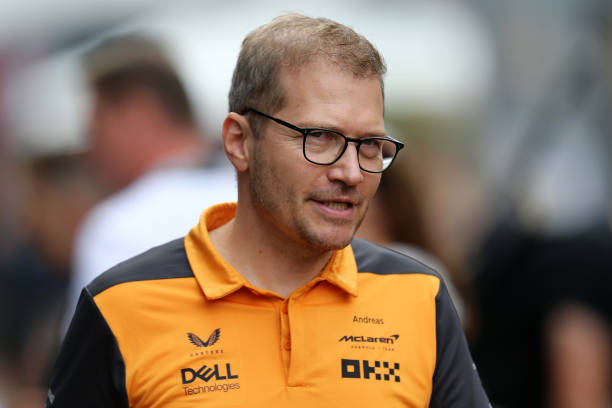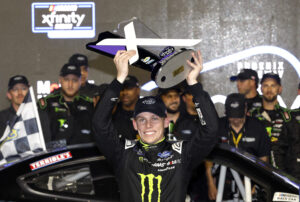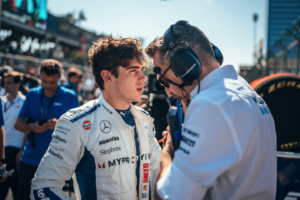The second move in the Team Principal roulette was Andreas Seidl going from McLaren to Alfa Romeo. The move was a relative shock as Seidl passed up on the Ferrari job and seemed quite happy at McLaren.
Instead, in a shocking turn of events, Alfa Romeo announced Andreas Seidl would head their project and continue as Audi plan their takeover of the team.
Zak Brown, in an interview, cited that Seidl already planned on joining the Sauber team when his contract expired in 2025. Seidl stated he would not resign from McLaren as he wanted to go to Sauber. There was little McLaren could do as the departure of Vausser meant that the timeline for him going Alfa Romeo would be sped up. Brown told the media at the McLaren factory.
“[Andreas] informed me during the season that he was going to go elsewhere, when his contract was up at the end of 2025 [It was] probably pretty clear where that destination would be, which was quite understandable, given his background. At that time, we intended to continue for the foreseeable future, because the relationship is very, very healthy. And his work discipline is very strong. What we were going to do at that point was, at the end of the season, let the world know that that change would come in at the end of the ‘25 season.”
When looking at Seidl’s experience, it makes sense why he was so set on joining the Sauber-Audi project. From 2000 to 2009, Seidl worked for the BMW F1 team as an engineer. Once BMW left Formula 1, he led Mercedes’ DTM team before switching to Porsche’s Le Mans team.
Porsche is also under the same Volkswagen group that Audi belongs to. Seidl’s longstanding connection with the German automotive collective influenced his desire to lead the project. His reputation among Audi’s leaders could give him confidence in having their trust and allowing him to build a successful project.
A New Engine Manfuactuer Arises
In the same interview, Zak Brown stated that Seidl did not leave because of McLaren’s project but instead due to his pre-existing relationship with Volkswagen and Sauber.
Still, the Audi project does pose some attractive potential as they will be in charge of manufacturing their own engine. As an engine supplier, they can extract more from the regulations and better develop a car around their own power supply. Seidl, therefore, goes from a team relying on Mercedes to produce an adequate power system to a team who will internally create an engine and build their car around it.
Audi aims to win races by 2028, only two years after the new engine regulations are set to be implemented in 2026.
“In the last 30 years, it must be one of the most advanced decisions of any manufacturer. In addition, in 2026 a regulatory cycle begins, when usually others have entered in the middle of a cycle. The power units will change, but also the chassis. In some ways, it can reset the advantage of experienced competitors in the past, and makes it easier for new builders to be competitive.”
The comfort and performance potential of a move to Audi attracted Seidl enough to want to leave McLaren’s project. It is unclear if there is some weakness in the McLaren project, but Andreas Seidl saw a team in which he had the belief of the higher-ups and the clay to mold a race-winning car in the long term future.
Seidl’s move carries a high-risk level as Sauber could underwhelm as a powertrain supplier and as a collective team. Still, Audi’s moves thus far indicate they are betting big on the 2026 regulations. They want to set the foundation now.






